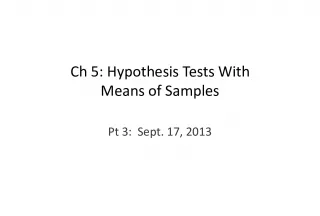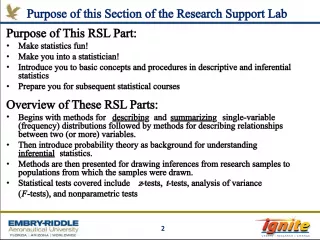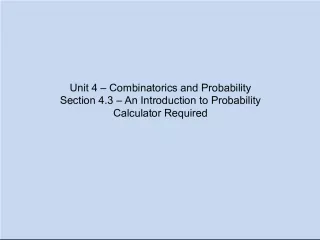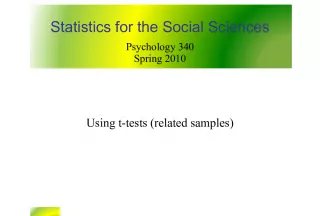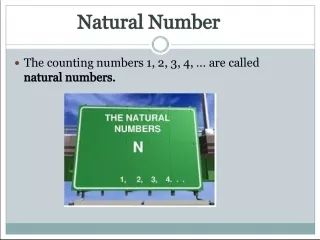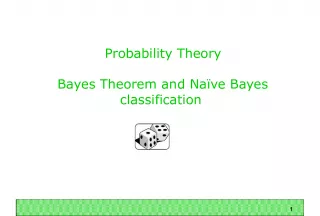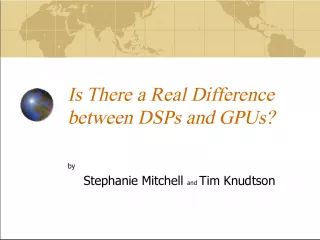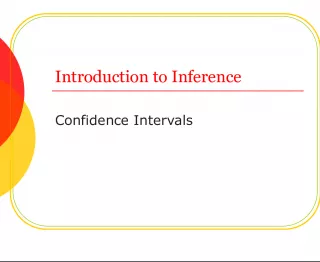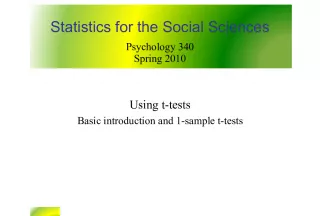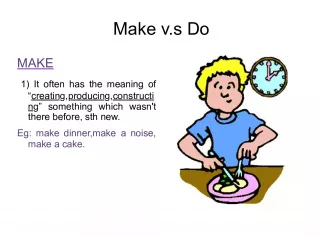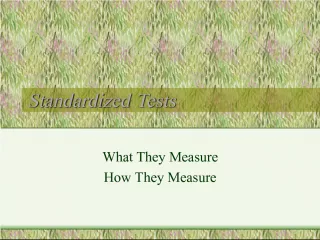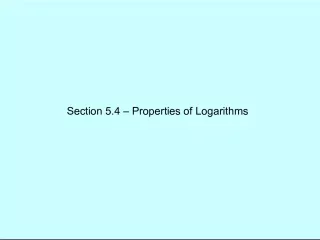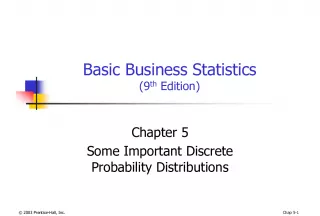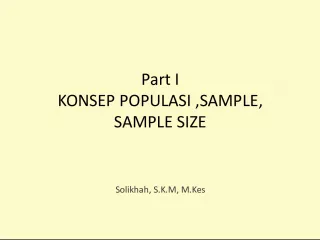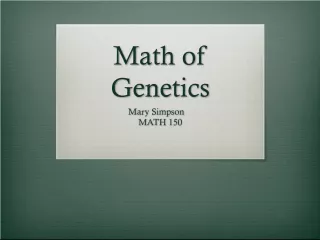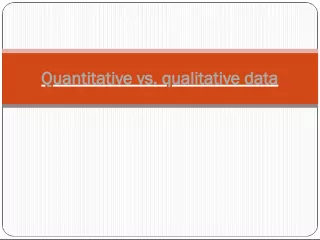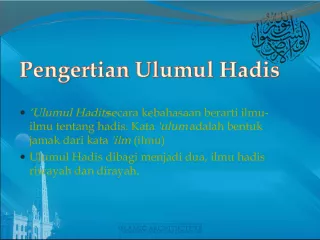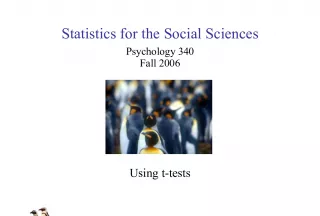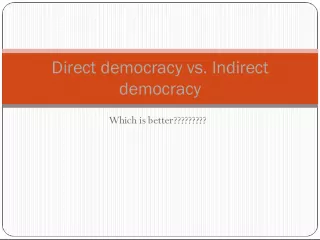T Tests for Difference in Means: Understanding Probability of Population Differences


This article explores the strategy for conducting T tests for difference in means in sociology research. It addresses the challenge of not knowing the true population means and presents a solution to determine whether groups truly differ based on the sampling distribution of the difference in means.
- Uploaded on | 4 Views
-
 nicy
nicy
About T Tests for Difference in Means: Understanding Probability of Population Differences
PowerPoint presentation about 'T Tests for Difference in Means: Understanding Probability of Population Differences'. This presentation describes the topic on This article explores the strategy for conducting T tests for difference in means in sociology research. It addresses the challenge of not knowing the true population means and presents a solution to determine whether groups truly differ based on the sampling distribution of the difference in means.. The key topics included in this slideshow are sociology research, T tests, difference in means, population means, Central Limit Theorem,. Download this presentation absolutely free.
Presentation Transcript
1. Sociology 5811: T-Tests for Difference in Means Wes Longhofer, pinch-hitting for Evan Schofer
2. Strategy for Mean Difference We never know true population means So, we never know true value of difference in means So, we dont know if groups really differ If we can figure out the sampling distribution of the difference in means We can guess the range in which it typically falls If it is improbable for the sampling distribution to overlap with zero , then the population means probably differ An extension of the Central Limit Theorem provides information necessary to do calculations!
3. Sampling Distribution for Difference in Means The mean (Y-bar) is a variable that changes depending on the particular sample we took Similarly, the differences in means for two groups varies, depending on which two samples we chose The distribution of all possible estimates of the difference in means is a sampling distribution! The sampling distribution of differences in means It reflects the full range of possible estimates of the difference in means.
4. Mean Differences for Small Samples Sample Size: rule of thumb Total N (of both groups) > 100 can safely be treated as large in most cases Total N (of both groups) < 100 is possibly problematic Total N (of both groups) < 60 is considered small in most cases If N is small, the sampling distribution of mean difference cannot be assumed to be normal Again, we turn to the T-distribution.
5. Mean Differences for Small Samples To use T-tests for small samples, the following criteria must be met: 1. Both samples are randomly drawn from normally distributed populations 2. Both samples have roughly the same variance (and thus same standard deviation) To the extent that these assumptions are violated, the T-test will become less accurate Check histogram to verify! But, in practice, T-tests are fairly robust.
6. Mean Differences for Small Samples For small samples, the estimator of the Standard Error is derived from the variance of both groups (i.e. it is pooled) Formulas:
7. Probabilities for Mean Difference A T-value may be calculated: Where (N1 + N2 2) refers to the number of degrees of freedom Recall, t is a family of distributions Look up t-dist for N1 + N2 -2 degrees of freedom.
8. T-test for Mean Difference Back to the example: 20 boys & 20 girls Boys: Y-bar = 72.75, s = 8.80 Girls: Y-bar = 78.20, s = 9.55 Lets do a hypothesis test to see if the means differ: Use -level of .05 H0: Means are the same ( boys = girls ) H1: Means differ ( boys girls ).
9. T-test for Mean Difference Calculate t-value:
10. T-Test for Mean Difference We need to calculate the Standard Error of the difference in means:
11. T-Test for Mean Difference We also need to calculate the Standard Error of the difference in means:
12. T-test for Mean Difference Plugging in Values:
13. T-test for Mean Difference
14. T-Test for Mean Difference Question: What is the critical value for =.05, two-tailed T-test, 38 degrees of freedom (df)? Answer: Critical Value = approx. 2.03 Observed T-value = 1.88 Can we reject the null hypothesis (H0)? Answer: No! Not quite! We reject when t > critical value
15. T-Test for Mean Difference The two-tailed test hypotheses were: Question: What hypotheses would we use for the one-tailed test?
16. T-Test for Mean Difference Question: What is the critical value for =.05, one-tailed T-test, 38 degrees of freedom (df)? Answer: Around 1.684 (40 df) One-tailed test: T =1.88 > 1.684 We can reject the null hypothesis!!! Moral of the story: If you have strong directional suspicions ahead of time, use a one-tailed test. It increases your chances of rejecting H0. But, it wouldnt have made a difference at =.01
17. Another Example Question: Do the mean batting averages for American League and National League teams differ? Use a random sample of teams over time American League: Y-bar = .2677, s = .0068, N=14 National League: Y-bar = .2615, s = .0063, N=16 Lets do a hypothesis test to see if the means differ: Use -level of .05 H0: Means are the same ( American = National ) H1: Means differ ( American National )
18. T-test for Mean Difference Calculate t-value:
19. T-Test for Mean Difference We need to calculate the Standard Error of the difference in means:
20. T-Test for Mean Difference We also need to calculate the Standard Error of the difference in means:
21. T-test for Mean Difference Plugging in Values:
22. T-test for Mean Difference
23. T-Test for Mean Difference Question: What is the critical value for =.05, two-tailed T-test, 28 degrees of freedom (df)? Answer: Critical Value = approx. 2.05 Observed T-value = 2.58 Can we reject the null hypothesis (H0)? Answer: Yes We reject when t > critical value What if we used an -level of .01? Critical value=2.76
24. T-Test for Mean Difference Question: What if you wanted to compare 3 or more groups, instead of just two? Example: Test scores for students in different educational tracks: honors, regular, remedial Can you use T-tests for 3+ groups? Answer: Sort of You can do a T-test for every combination of groups e.g., honors & reg, honors & remedial, reg & remedial But, the possibility of a Type I error proliferates 5% for each test With 5 groups, chance of error reaches 50% Solution: ANOVA.
